
Newsletter Subscribe
Enter your email address below and subscribe to our newsletter

Enter your email address below and subscribe to our newsletter
Spicy Stir-fried calamari is a delicious dish with delicate, spicy, and savoury flavours. This recipe encompasses a fiery kick with soft textures. If you love seafood, you will enjoy stir-fried calamari (Ojingeo-bokkeum).
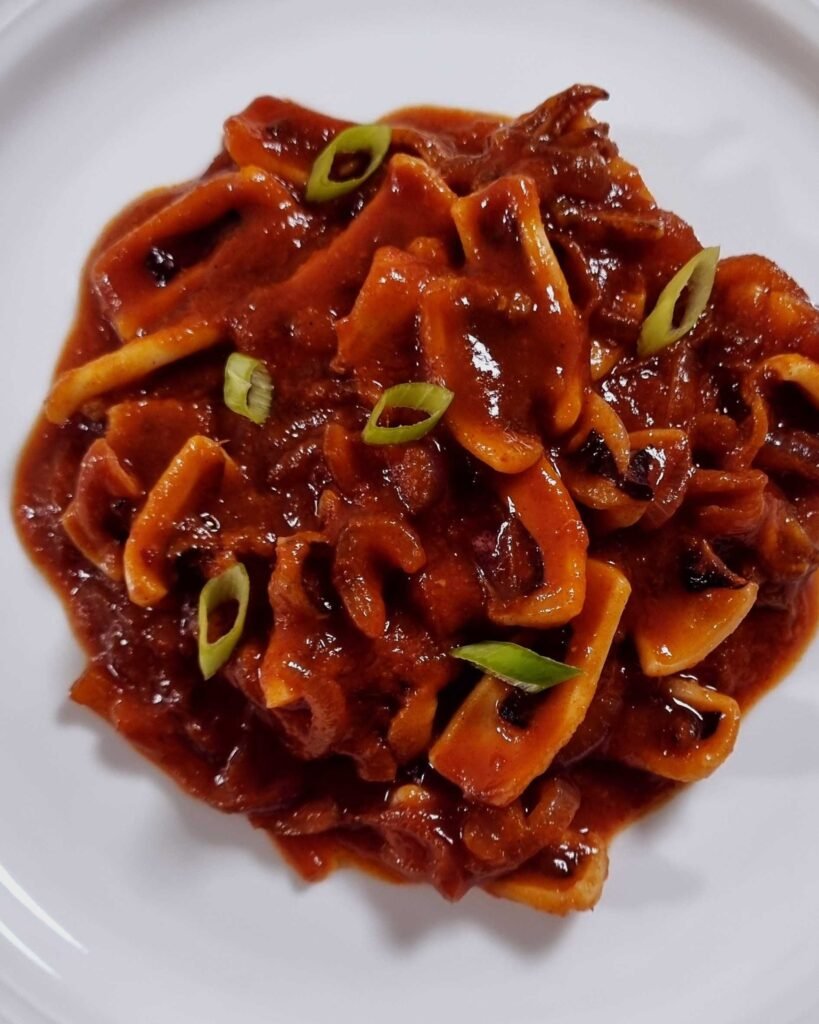
Squid has been a staple of Korean diets for a long time, and stir-fried calamari in gochujang is popular among locals who live along the Korean peninsula.
Calamari, Onion, Scallions, Gochuchang, Oyster Sauce, Gochugaru, Soy Sauce, Ginger & Garlic Paste, Sesame seed oil.
Fresh squid is tender with a chewy texture. It pairs perfectly with the gochujang sauce. Substitute with Shrimp, Prawns, or Chicken. Green chili, Onion, Scallions add crunch and flavour to the Spicy stir-fried calamari.
Gochujang is a fermented chili paste from South Korea. It is deep red in colour, and its primary flavours are sweet and spicy. It is made with red chili peppers from Korea, which have a subtle heat, but they are not as hot as Mexican, Indian, or Chinese chilies.
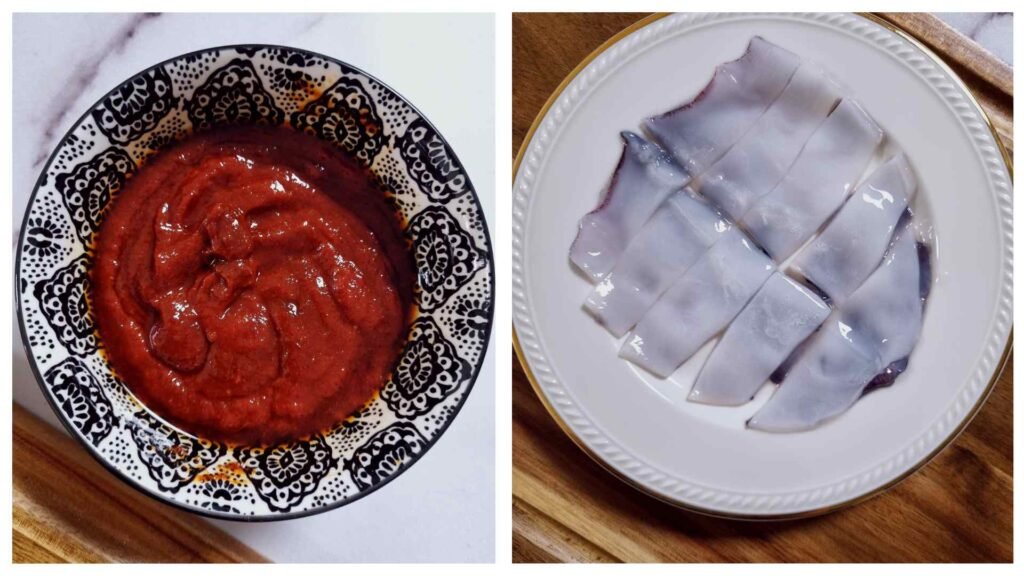
Oyster sauce has an umami taste that enhances the flavour of seafood. If you don’t have oyster sauce, substitute it with fish sauce or two tablespoons of soy sauce and one teaspoon of sugar to achieve the same taste. Gochugaru add a subtle heat. Soy sauce adds a unique flavour. (Substitute with Tamari sauce or Worcestershire sauce.) You can create your own paste with twenty grams of fresh ginger and five cloves of garlic for ginger and garlic. Sesame seed oil adds a nutty flavour.
Heat oil in a separate wok over medium-high heat. Add the onion and chives, and begin stir-frying. Ensure the vegetables are constantly moving in the pan; this will prevent them from burning. Gradually, the vegetables will soften and release water. They will caramelize and brown, developing a golden appearance.
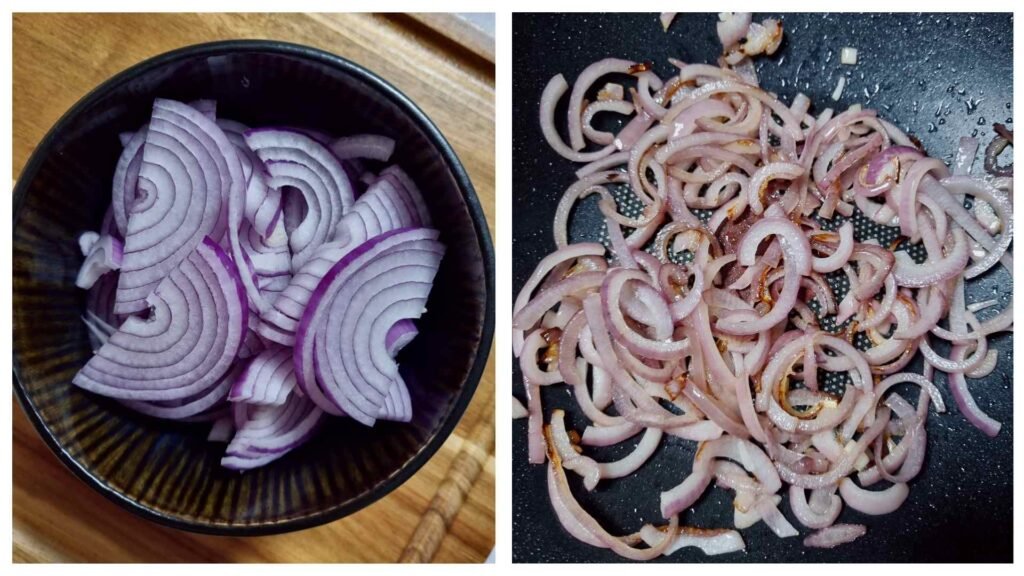
Add the hot sauce, when the gochujang starts to simmer, tiny bubbles will appear on its surface; add the soy sauce. Next, add the ginger-garlic paste. Continue by adding the oyster sauce, gochugaru, sesame seed oil, and a little bit of olive oil. When infused, these flavours will create a spicy, salty medley. Add the onions back into the pot. Stir the sauce to ensure that it is well combined.
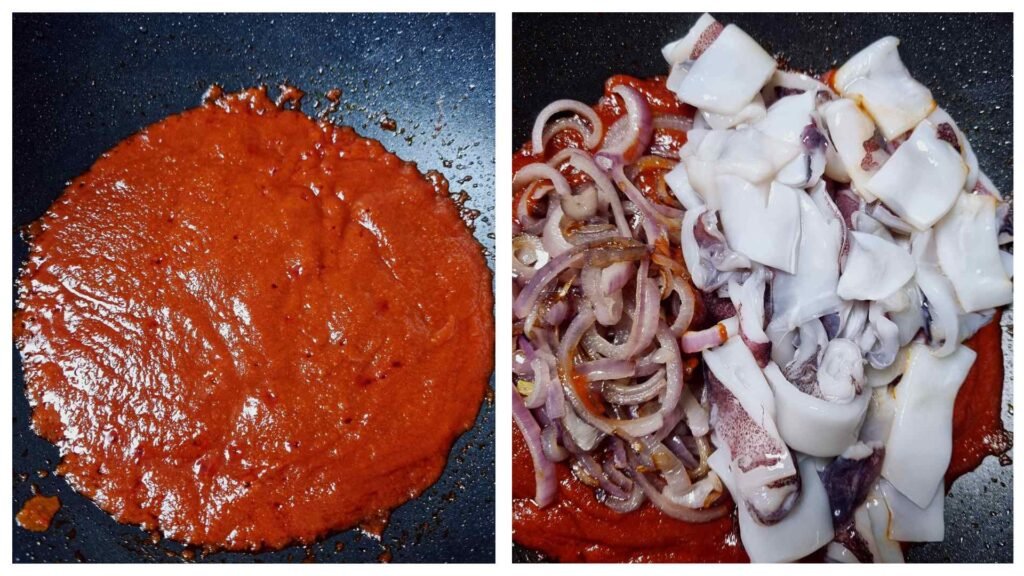
Allow the sauce to thicken for about two minutes, stirring occasionally to prevent it from burning. Once it has reached a thick consistency, the sauce is ready. It will have a glossy appearance. Taste the seasoning. You can add more gochugaru for heat. Turn off the heat and remove the pan from the stove.
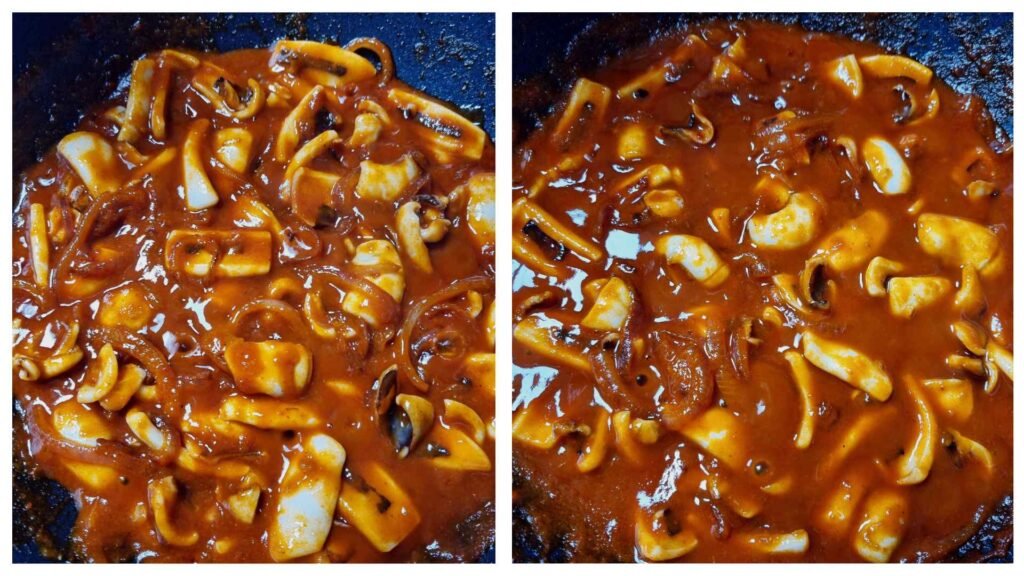
Add the calamari to the pan. Add the vegetables, followed by the premade red pepper sauce. Mix the ingredients to ensure that the calamari and vegetables are coated with the sauce. Increase the heat to medium and cook for five minutes. The calamari becomes tender as it mixes with the sauce. After five minutes, drizzle sesame seed oil on top for an extra nutty taste. Give the Ojingeo-bokkeum one final stir and serve.
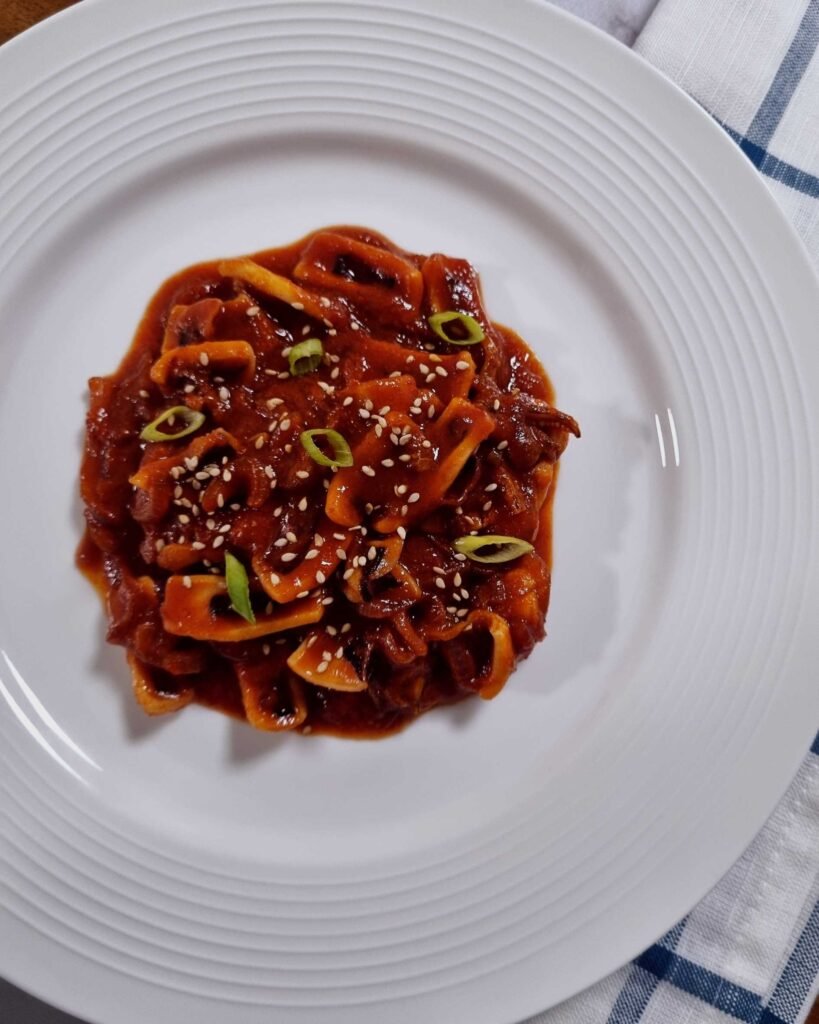
Add garnishes such as toasted sesame seeds and chopped green onions or chives for extra flavour.
Make sure that the pan is on low heat before adding the ingredients. This will prevent the sauce or ingredients from sticking to the pan. Calamari is a delicate mollusk; it can overcook and turn rubbery if the temperature is high. It is essential to avoid long cooking times. Once the calamari has curled up around the edges, it is ready.
You can store it in the fridge for two to three days. Reheat the ojingeo-bokkeum in a skillet on low heat. Freezing is also possible; however, the texture of the ojingeo-bokkeum will change. Make sure that it cools down completely, and then add it to a freezer-safe Tupperware or freezer packet. Freeze for one to two months. Reheat on the stove.
Serve your calamari stir-fry with Steamed rice. Kimchi pairs well with this dish. You can also eat it alongside mustard leaves or Kkaenip. Korean dried seaweed also goes well.
This is absolutely delicious!